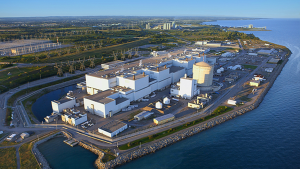The following is a breakdown of some of the budget highlights and lowlights, offering insights into infrastructure spending, sustainability, education and diversity.
OTTAWA — Pundits who have been complaining that federal phase 1 infrastructure spending promised in the 2016 budget has not worked its way through the system were largely right.
The budget document released by Finance Minister Bill Morneau on March 22 revealed that only 50 to 75 per cent of infrastructure allocations from Budget 2016 have been spent.
A line item labelled Value and Implementation Status of Budget 2016 Measures in 2016-17 identified $3.967 billion in promised infrastructure spending, next to an icon indicating it was "50 to 75 per cent on track."
The document offered this explanation: "Complex infrastructure projects involving multiple levels of government and the private sector can see some slippage. Even if measures are not fully expensed as planned in 2016-17, this is not necessarily inconsistent with a higher level of activity (i.e., agreements having been signed with provinces, provinces having engaged firms to conduct work, and work having commenced). For example, Infrastructure Canada often makes payments to other jurisdictions with a lag once projects are finished or milestones reached."
Cost Sharing
The traditional sharing formula for municipal infrastructure builds has been one-third/one-third/one-third between federal, provincial and municipal funding partners. In Budget 2016 the federal government stated it would fund up to 50 per cent of municipal projects for one year only.
Federation of Canadian Municipalities (FCM) Big-City Mayors’ Caucus chair Don Iveson of Edmonton told the Daily Commercial News it was hoped the federal component would be as generous going forward to help stretch municipal dollars.
But it was not to be. Morneau announced March 22 the federal share of the tri-partite infrastructure builds in future would be 40 per cent. The federal share of projects with provincial partners will be 50 per cent; and there will be up to 75 per cent federal funding for projects with indigenous partners and projects with territorial partners.
For public transit in provinces, the budget states, the government will provide up to 50 per cent of eligible costs for rehabilitation projects (with funding for rehabilitation projects capped at 15 per cent of total public transit funding), while funding for new public transit construction and expansion projects will be cost-shared at up to 40 per cent federal funding.
Skills Funding
The Conference Board of Canada compiled a list of almost a dozen budget measures intended to boost skill levels among workers. Included were:
• $1.8 billion over six years through Labour Market Transfer Agreements for provincial skills training programs
• federal student grants and loans for part-time students
• funding for adult students with dependent children
• student loans for adults returning to school
• allowing Employment Insurance (EI) recipients to remain eligible while undergoing training
• $225 million for a new institution aimed at finding new approaches to address skills shortages
• additional funding for the Youth Employment Strategy
• funding for Pathways to Education
• EI for caregivers
• funds to improve indigenous post-secondary education
• $27.5 million for Employment and Social Development Canada to create a Targeted Employment Strategy for Newcomers, including helping with foreign credential recognition.
Sustainability Investment
Speaking on behalf of the Royal Architectural Institute of Canada (RAIC), the organization’s president-elect Michael Cox praised the budget’s focus on sustainability and its investment in communities.
"Its promise is to invest in more sustainable systems — infrastructure, buildings, transportation, industry and innovation — that will elevate Canadians’ quality of life," he said in an RAIC statement.
Sustainability elements identified by the RAIC included new building codes, energy renewal programs and $5 billion earmarked for green infrastructure projects.
"A clean environment and strong economy go hand-in-hand," says Jennifer Cutbill, chair of RAIC’s committee on regenerative environments. "It’s good to see the government investing in climate change actions."
Acknowledging the commitments for additional funding for indigenous people, professor and architect Patrick Stewart, chair of the RAIC’s Indigenous task force, said any such investment must be "based in the indigenous knowledge of their communities to contribute to the success of their communities.
"This is especially true for design where our alternative design processes and forms of community engagement empower First Nations communities."











Recent Comments
comments for this post are closed